What connection do solar farms have on property values? This is what a recent study published in the Proceedings of the National Academy of Sciences hopes | Technology
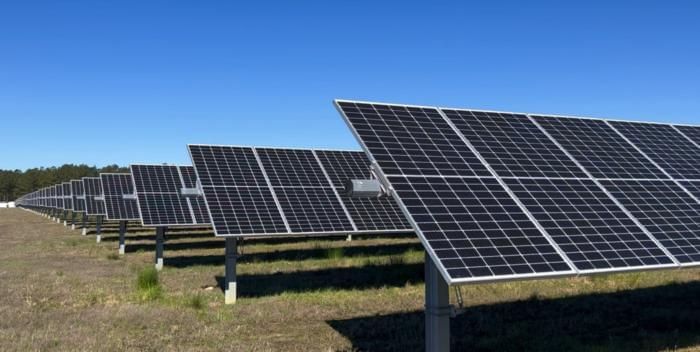

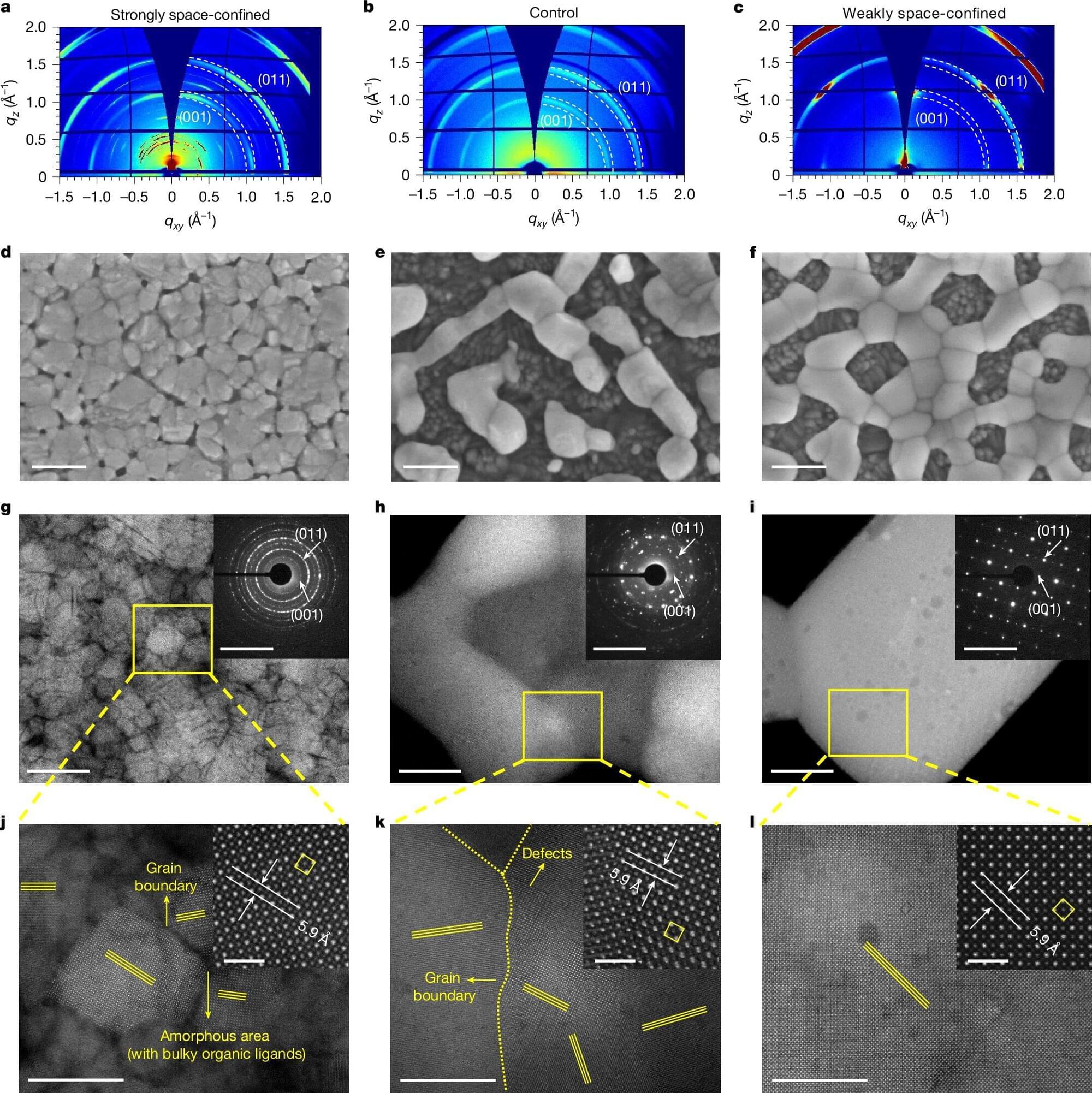
Perovskite has broad application prospects in solar cells, light-emitting diodes (LEDs), and detectors due to its high luminescent efficiency and low cost. However, electrons and holes in traditional perovskite materials often struggle to effectively recombine and emit light. As a result, the strongly space-confined method is commonly employed to improve luminescence efficiency. Furthermore, how to enhance the brightness of LEDs and extend their lifespan has become a top research priority in this field.
In a study published in Nature, Prof. Xiao Zhengguo’s team from the University of Science and Technology of China (USTC) of the Chinese Academy of Sciences has proposed a novel strategy based on weakly space-confined, large-grain crystals of all-inorganic perovskite to prepare perovskite films with larger crystalline grains and higher temperature resistance. Researchers increased the brightness of perovskite LEDs (PeLEDs) to over 1.16 million nits and extended their lifespan to more than 180,000 hours.
Researchers developed the strategy based on the weakly space-confined technique. They first added specific compounds—hypophosphorous acid and ammonium chloride—to the perovskite material. Then, they prepared a new type of perovskite thin film with larger crystalline grains and fewer defects using a high-temperature annealing process.
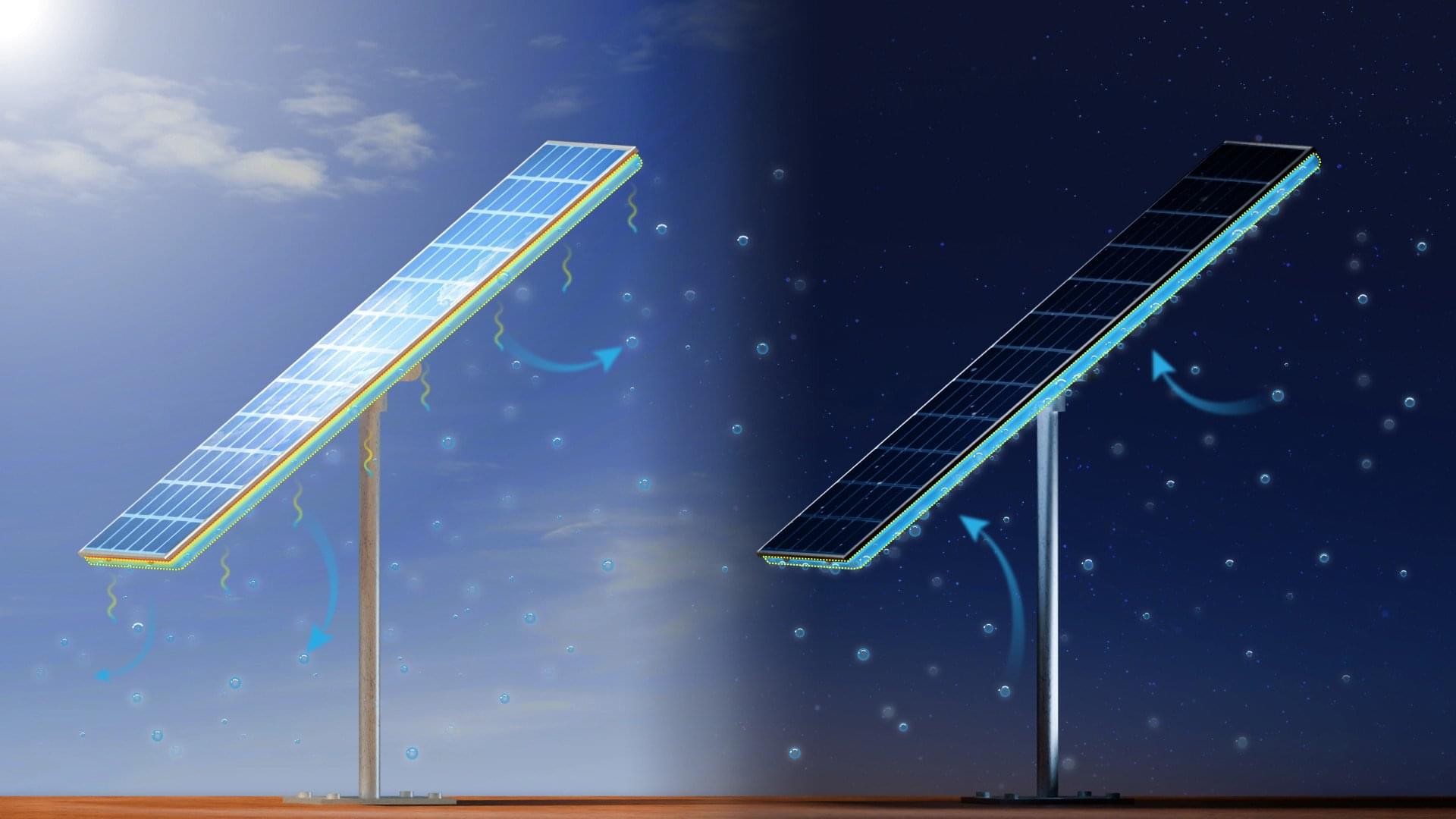
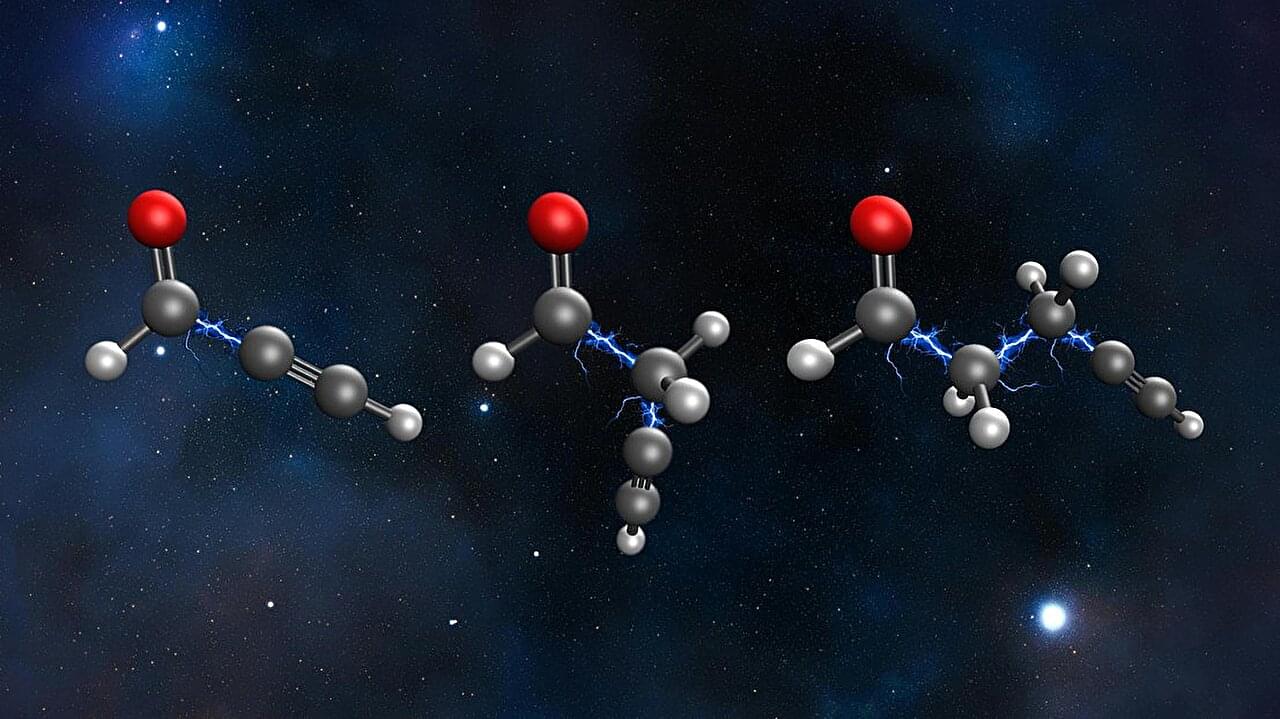
A team at EPFL and the University of Arizona has discovered that making molecules bigger and more flexible can actually extend the life of quantum charge flow, a finding that could help shape the future of quantum technologies and chemical control. Their study is published in the Proceedings of the National Academy of Sciences.
In the emerging field of attochemistry, scientists use laser pulses to trigger and steer electron motion inside molecules. This degree of precision could one day let us design chemicals on demand. Attochemistry could also enable real-time control over how chemical bonds break or form, lead to the creation of highly targeted drugs, develop new materials with tailor-made properties, and improve technologies like solar energy harvesting and quantum computing.
But the big roadblock is decoherence: Electrons lose their quantum “sync” within a few femtoseconds (a millionth of a billionth of a second), especially when the molecule is large and floppy. Researchers have tried different methods to sustain coherence—using heavy atoms, freezing temperatures etc. Because quantum coherence vanishes at macroscopic scales, most approaches to sustaining coherence operate on the same assumption: larger and more flexible molecules were assumed to lose coherence more rapidly. What if that assumption is wrong?

Artificial photosynthesis is a technology with immense potential that aims to emulate the natural photosynthetic process. The process of natural photosynthesis involves the conversion of solar energy into chemical energy, which is stored in organic compounds. Catalysis is an essential aspect of artificial photosynthesis, as it facilitates the reactions that convert solar energy into chemical energy. In this review, we aim to provide an extensive overview of recent developments in the field of artificial photosynthesis by catalysis. We will discuss the various catalyst types used in artificial photosynthesis, including homogeneous catalysts, heterogeneous catalysts, and biocatalysts.
This docu-series covers all three of Earth’s next landing options – Asteroids, the Moon and Mars. The programmes explore the scientific reasons for and against each celestial body’s case to be the next that humans might colonise. They explore the technical and logistical problems and benefits of each – EG temperature at night and day, ability or inability to harness solar power and more.
Join the Spark Channel Membership to get access to perks:
/ @sparkdocs.
Watch the best history documentaries, with 50% off your first 3 months, on History Hit: https://historyhit.com/subscribe Using the code SPARK
Find us on:
Facebook: / sparkdocs.
Instagram: / spark_channel.
Any queries, please contact us at: [email protected].
Notably in April, Sierra Space announced the completion of successful hypervelocity impact trials conducted at NASA’s White Sands Test Facility in Las Cruces, New Mexico, to optimize the structural integrity of Sierra Space’s LIFE habitat space station technology. This included the use of NASA’s .50 caliber two-stage light gas gun to replicate micrometeoroid and orbital debris (MMOD) impacts to LIFE’s outer shield, to prepare the space station of use in orbit.
About Sierra Space.
Sierra Space is a leading commercial space company and emerging defense tech prime that is building an end-to-end business and technology platform in space to benefit and protect life on Earth. With more than 30 years and 500 missions of space flight heritage, the company is reinventing both space transportation with Dream Chaser®, the world’s only commercial spaceplane, and the future of space destinations with the company’s expandable space station technology. Using commercial business models, the company is also delivering orbital services to commercial, DoD and national security organizations, expanding production capacity to meet the needs of constellation programs. In addition, Sierra Space builds a host of systems and subsystems across solar power, mechanics and motion control, environmental control, life support, propulsion and thermal control, offering myriad space-as-a-service solutions for the new space economy.
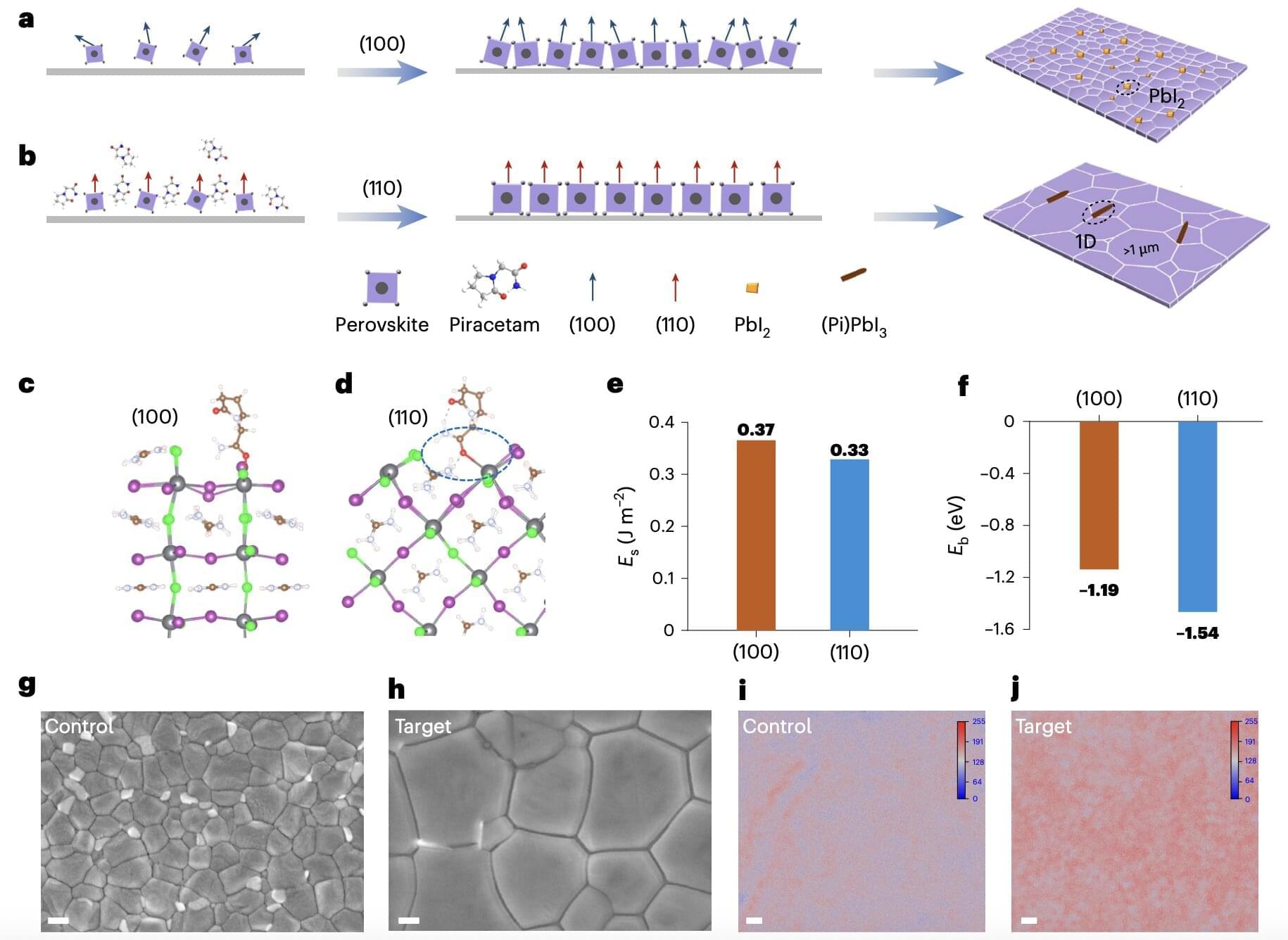
All-perovskite tandem solar cells (TSCs) are a class of solar cells comprised of two or more sub-cells that absorb light with different wavelengths, all of which are made of perovskites (i.e., materials with a characteristic crystal structure known to efficiently absorb light). These solar cells have been found to be highly promising energy solutions, as they could convert sunlight into electricity more efficiently than existing silicon-based solar cells.
Despite their potential, most all-perovskite TSCs developed to date only perform well when they are small and their performance rapidly declines as their size increases. This has ultimately prevented them from being manufactured and deployed on a large-scale.
Researchers at Wuhan University and other institutes in China recently introduced a new strategy for enhancing the performance of all-perovskite TSCs irrespective of their size, which could in turn contribute to their future commercialization. Their proposed approach for fabricating these cells, outlined in a paper published in Nature Nanotechnology, entails the use of piracetam, a chemical additive that can help to control the initial phase of crystal formation (i.e., nucleation) in wide-bandgap perovskites.

A new study led by Tohoku University has revealed that rooftop solar panels, when combined with electric vehicles (EVs) as batteries, could supply 85% of Japan’s electricity demand and reduce carbon dioxide emissions by 87%. The research provides a promising pathway for Japan’s local governments to achieve carbon neutrality by taking advantage of existing infrastructure—rooftops and vehicles—rather than relying solely on large-scale energy systems.

IN A NUTSHELL 🌱 Researchers at the University of Tokyo developed a method to produce ammonia using artificial photosynthesis. 🔬 The process mimics natural nitrogen fixation by cyanobacteria, utilizing atmospheric nitrogen, water, and sunlight. ⚙️ This method uses a combination of iridium and molybdenum catalysts to enhance reaction efficiency. 🌍 The innovation promises to reduce